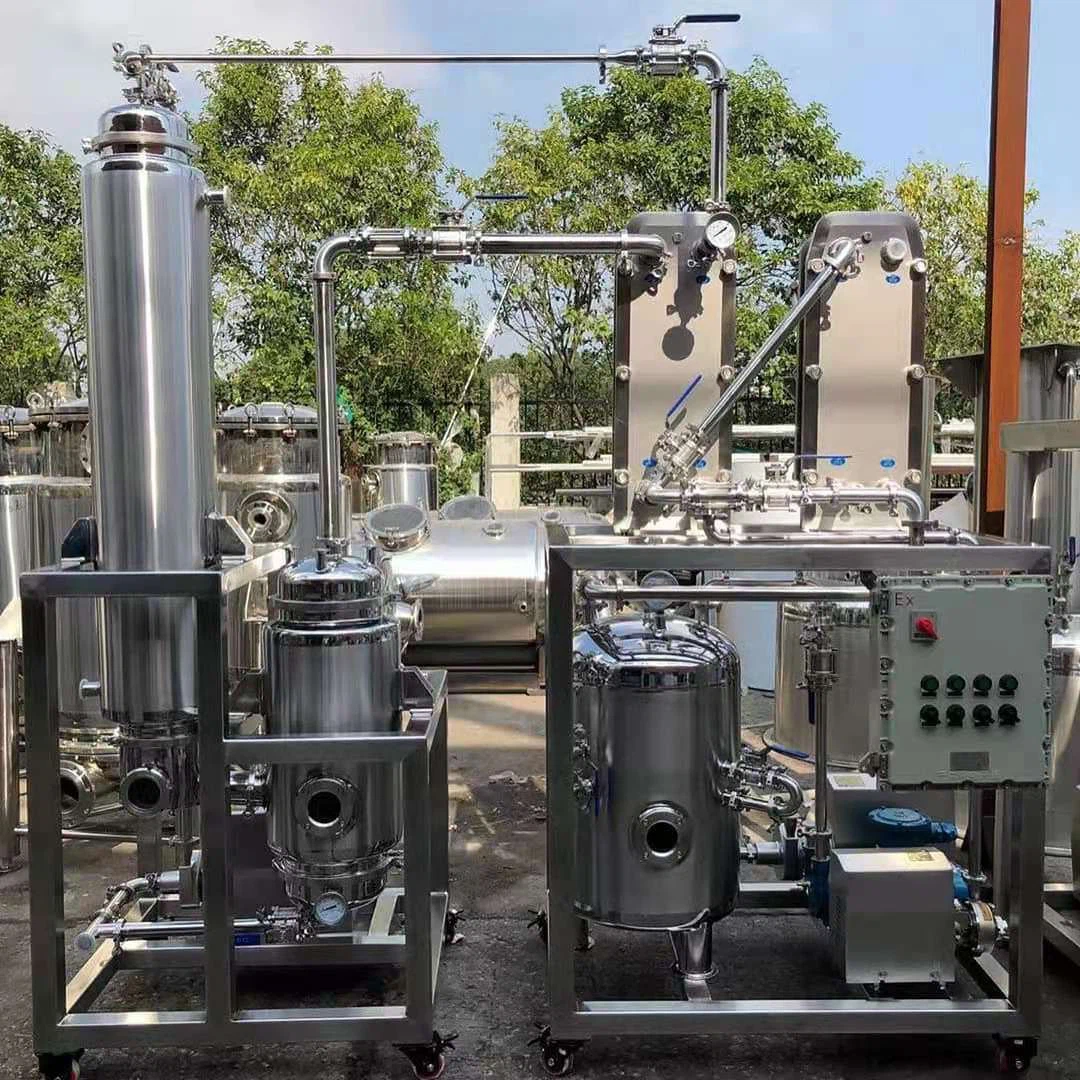- Description
- Reviews (0)
Description
Working process of falling film evaporator
Falling film evaporation is to add the material liquid from the upper tube box of the heating chamber of the falling film evaporator, and distribute it evenly into the heat exchange tubes through the liquid distribution and film forming device. Under the action of gravity, vacuum induction, and airflow, it becomes a uniform film. Flow from top to bottom. The generated steam and liquid phase enter the separation chamber of the evaporator. After the vapor and liquid are fully separated, the steam enters the condenser for condensation (single-effect operation) or enters the next-effect evaporator as The medium is heated to achieve multi-effect operation, and the liquid phase is discharged from the separation chamber.
Technical Specifications Of Falling Film Evaporator
| Model | FFE-100L | FFE-200L | FFE-500L | FFE-1000L |
| Evaporation Rate (L/hr) | 100 | 200 | 500 | 1000 |
| Evaporator Part Dimension (cm) | 95 * 85 * 255 | 110 * 90 * 275 | 120 * 100 * 460 | 140 * 120 * 520 |
| Condenser Part Dimension (cm) | 120 * 85 * 230 | 130 * 90 * 250 | 130 * 100 * 420 | 130 * 120 * 460 |
| Feeding Pump (kW) | 0.37 | 0.75 | ||
| Discharge Pump (Oil, kW) | 0.75 | |||
| Discharge Pump (Ethanol, kW) | 0.75 | |||
| Panel (kW) | <50 | |||
| Total Weight (kg) | 1000 | 1300 | 1500 | 1800 |
| Total Power (kW) | 4 | 4 | 6.5 | 6.5 |
| Electricity | 240V, 3 Phase, 60Hz or Customizable | |||

Advantages of each type of evaporator
1. Thin-Film Evaporators
- High Efficiency: Thin-film evaporators, therefore, offer excellent heat transfer, which enables rapid evaporation due to the thin layer of liquid.
- Short Residence Time: The design minimizes the time the product is exposed to heat, reducing the risk of thermal degradation.
- Versatility: Suitable for a wide range of viscous and heat-sensitive materials.
- Continuous Operation: They can operate continuously, making them ideal for large-scale production.
2. Rising-Film Evaporators
- Low Energy Consumption: The rising film design allows for efficient heat transfer, reducing energy costs.
- Self-Priming: The natural upward flow of the liquid helps in maintaining a continuous process without the need for pumps.
- Good for Low-Viscosity Liquids: Rising-film evaporators are particularly effective for liquids with low viscosity; consequently, they allow for quick evaporation.
- Compact Design: Their vertical orientation saves space in industrial settings.
3. Falling-Film Evaporators
- Gentle Processing: The falling film design minimizes the residence time, making it suitable for heat-sensitive products.
- High Heat Transfer Rates: The thin film of liquid enhances heat transfer efficiency.
- Easy Maintenance: Falling-film evaporators, therefore, feature a design that allows for easier cleaning and maintenance compared to other types.
- Effective for Viscous Liquids: They can handle a range of liquid viscosities effectively.
4. Rotary Evaporators
- Efficient Solvent Removal: Ideal for removing solvents from samples in laboratories, providing high efficiency.
- Controlled Environment: The ability to control temperature and pressure allows for gentle evaporation of heat-sensitive compounds.
- Compact and Portable: Their design makes them suitable for laboratory use where space is limited.
- Versatile Applications: Used in various fields, including chemistry and pharmaceuticals, for distillation and concentration processes.

About us
Each type of evaporator has its unique advantages, making them suitable for different applications based on the specific needs of the process. Contact [email protected] to consult and ask price list now.












Reviews
There are no reviews yet.